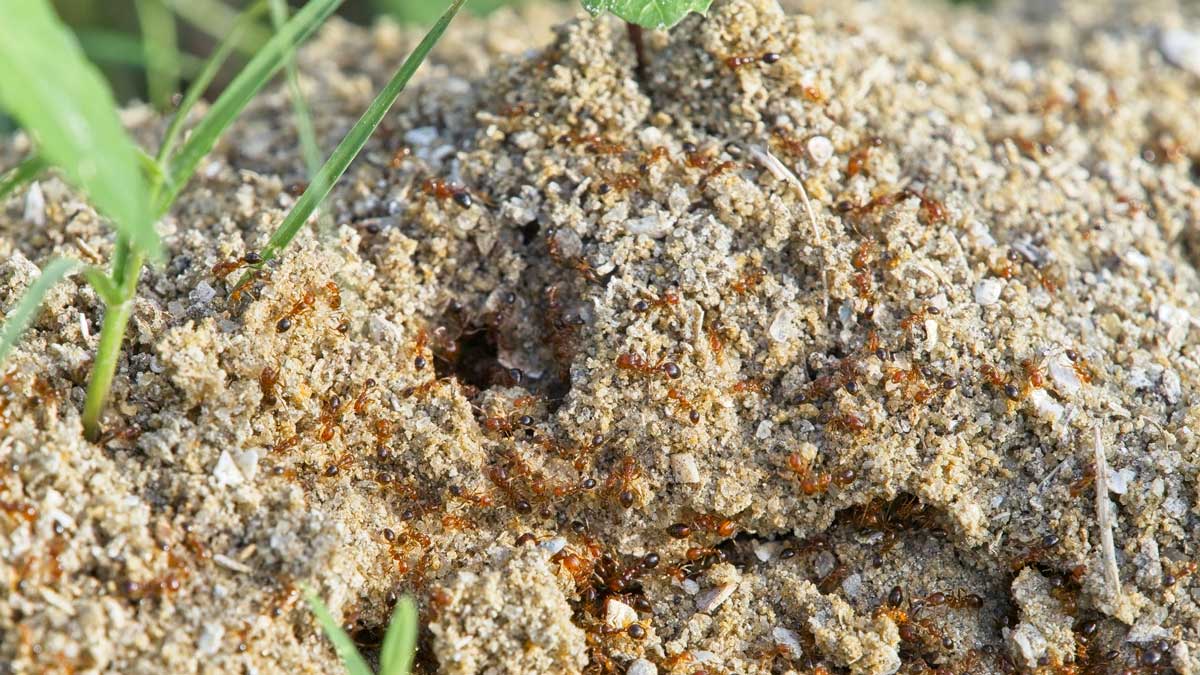FIRE ANTS

Solenopsis invicta is the latin name for the red imported fire ant. This species is native to South America and was accidentally introduced by ship to Mobile, Alabama, in the 1930s and now persists in about a dozen states. This non-native ant will continue to spread west and north until it reaches areas too arid and/or too cold for its liking. The ants disperse naturally through mating flights, mass movement of colonies, and by floating to new locations in flood waters. They also can travel long distances on cars, trucks, or trains especially through shipments of nursery plants or soil.
Early efforts to eradicate fire ants during the late 1960s through the early 1970s used insecticides such as heptachlor and mirex which also killed non-target insects and other wildlife, including birds. As homeowners and landowners, we should spot-treat fire ant mounds that appear on our properties. Spot-treatment, as opposed to broadcast-treatment, avoids impacting non-target species and is better for the land. Non-native fire ants are known to impact active nests of birds in spring and summer. Investigate ways to effectively control red imported fire ants on your property while respecting the value of native species of ants and the role they play in nature ars.usda.gov. The key word here is “control”. “Eradication” is likely not an option. Part of the latin name of the red imported fire ant – “invicta” – refers to being unconquered or undefeated. Help the birds and other wildlife on your property by working diligently to control the red imported fire ant. Do it for the owls.
Order your Owl Shack HERE
